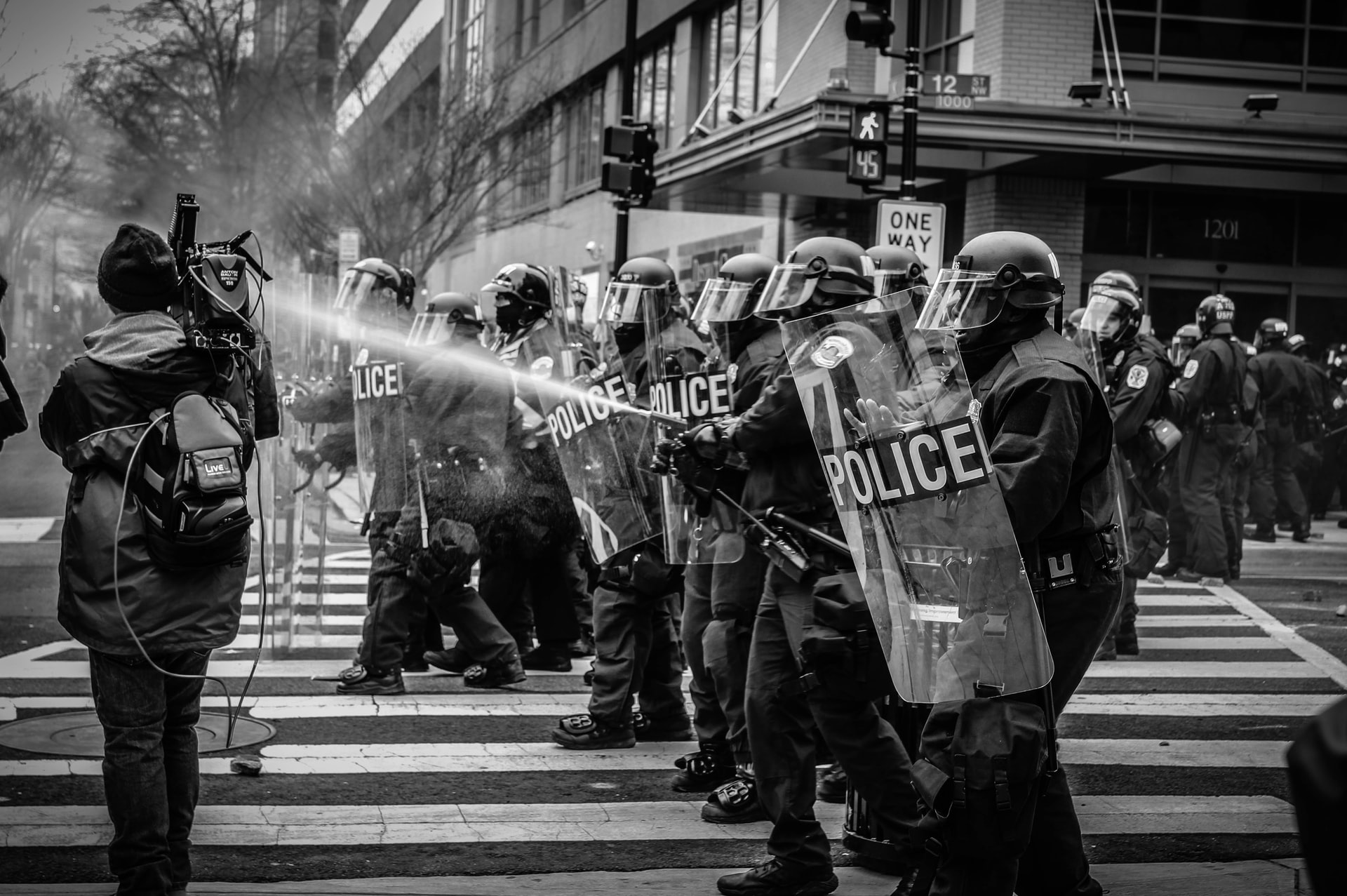
10 Ways Smaller Police Departments Can Build Stakeholder Communications
Police departments without a PIO can find it challenging to ensure a regular flow of quality communications coupled with community and stakeholder engagement. During times of crisis or intensive constituent interest, police officials face even more pressure to communicate regularly. But how can they better prepare for communications with their stakeholders, given their limited resources? Here is a 10-point summarized plan of action for police chiefs to consider:
1. Form a planning team: A communications planning team should be set up that includes the chief, their deputy, and a few other interested officers. The job of the planning team is to steer the entire communications planning process from conception right through to completion.
2. Learn about your stakeholders: You cannot create a communications plan if you do not understand your audience. Police departments should take some time to understand who their audience is, who the key influencers are, what issues concern them, what they say about these issues publicly, and what communication channels they use to reach their networks and followers. Stakeholders police departments should analyze include elected officials, the media, the public and other strategic partners such as state police, county sheriffs, and more.
3. Select the communications team: The police department should then create a communications team. Typically, the chief will act as the PIO or, if there is no chief, the most senior officer will fill that role. Other team members should include another senior officer who could act as the PIO backup and a support officer. Don’t forget to designate who will be responsible for social media. Each member of the communications team should have their roles and responsibilities on the team clearly defined.
4. Build two communications plans: Police officials can confidently craft two communications plans once they understand who their stakeholders are, what issues concern them and how they communicate.
The first plan should be public relations oriented and include the communication objectives the department wants to achieve and the relevant tactics it will implement to build stakeholder communications. Core standby messaging should be developed around various scenarios. The messaging can be amended based on the scenario being managed. The communications team together with their roles, responsibilities and contact details must be included in the plan.
A calendar of events (find ideas for community events in point 7) that the police department will implement on a monthly basis to boost stakeholder communications and engagement is an important component to include. There should be monthly media engagement that excludes any media activity related to daily incidents that the media may seek police comment about.
Another key element to include: a social media plan and social media policies that guides what can and cannot be said, and by whom, on the department’s social media platforms. The second plan the department must have focuses on crisis communications. This plan will guide the police department’s communications efforts and reputation protection through an event. The crisis plan should include a section on issues and events that it considers a crisis, the crisis team, roles and responsibilities in a crisis, holding statements, etc. Don’t forget a social media crisis plan and crisis policy that dictate what can and cannot be done on the department’s social media assets during an incident. The crisis plan can either be incorporated
5. Test the crisis communications plan: The crisis communications plan must be tested to iron out any kinks and challenges. The plan can then be updated. Tests should be conducted once a year in a tabletop format where crisis team members discuss a crisis and their roles and responses to a particular crisis situation. A yearly crisis exercise should be planned which must include other stakeholders such as the local fire department, mutual aid partners, the town board/mayor’s office, etc.
6. Invest in media relations: Proactively reach out to all local media and move to build a relationship. Include relevant reporters such as those on the crime and courts beat, breaking news, schools, transportation, as well as the editor. Ensure that all bad/poor relationships are repaired. Media relations is an ongoing process and investment. One meeting or discussion does not mean you have a solid relationship.
Part of the media relations process is providing a regular feed of actual news from your police department to the media, being available for interviews, being accessible for comments on a situation or scenario, and connecting with media on social media and communicating with them via their social channels. Don’t forget to have a content approval process so that each piece of communication receives full approval before it goes to the media.
Before you build out your media relations process, you need to ensure that every member of your department knows how to respond and redirect questions from the media and other stakeholders if they approach a member of your team for comment on any issue. This aspect should be built into your department’s public relations plan.
7. Invest in community relations: A core component of building trust and staying visible with your local community is regularly speaking to them in person, via direct communication (such as mailing out informational documents), and online. This is also a great opportunity to educate the local community about your police department, how it works, and what responsibilities police officers and members of the public have during any type of interaction. Build close relationships with community leaders (see point 2 above) and invest in these relationships. Transparency is key.
Most police departments are great at speaking to their constituents, but the opportunity always exists to broaden communications into various events and on different communication platforms. Ensure that whatever programs are put into place include youth, religious groups, retirees, and other relevant parties that may not understand how the police work. Here is a very short list of some opportunities, many of which, as mentioned, are already being used:
Coffee/pizza with the police, car seat fittings, town hall meetings, police ride along, citizen police academies, bicycle/road safety events, school outreach (besides school resource officer functions), police and community workshops on key topics, holiday safety seminars. The opportunity also exists to work with community organizations such as places of worship and relevant local non-profits.
Ultimately, to build your community relationships your department will have to take the first step and it will likely have to drive the process.
8.Choose all communication assets wisely: Ideally, the police department should have its own dedicated website, and must not be hidden within the website of the town in which it operates. The website must have a news feed where announcements can be placed.
The best social media platforms for communication purposes are Twitter, Facebook, Instagram, and a YouTube channel, if necessary. You do not need more than these. The more platforms you have, the more time they will consume. Don’t forget, as mentioned, to ensure that your department has refined social media policies before it begins using any social platform. The policies should not only guide who will use the social assets and what can be said; the policies should extend to all sworn officers and civilian employees and should govern what they may and may not say online, or in public, while employed by your police department.
9. Focus on these communication values: There are dozens of “communication values” to guide how small police departments should engage with stakeholders. Here a few of the most pertinent standards: always having a spokesperson available; being transparent and communicating openly, honestly and responsibly; acting professionally and never saying or doing anything that can bring your department into disrepute. Once an image or content is posted on social media, or is reported by the media, it will persist even if you attempt to delete or remove it.
10. Measure and refine: Every year police departments should take time to objectively review the years’ recent stakeholder communications to determine its efficacy. Measuring its impact and looking at what worked and what did not work will allow the department to fine-tune the tactical assets and create a tactical plan of action for the following year.
Small police departments that do not have the luxury of their own PIO can hold their own in the high-stakes public information arena. But they must plan carefully and implement well-thought-out public relations activities.
Utilizing a combination of proactive and reactive public relations, community events, and social media, smaller police departments will enhance their reputations, build bridges, educate all stakeholders about what they do, and ensure that the police departments’ great public service and community focus shines through. Thank you to the members of all large and small police departments, and their families, for their service and sacrifice.
This article first appeared on Police1. Read the original article by clicking here.
Read our other police called No PIO? How smaller police departments mitigate their communication challenge without a dedicated PIO
Image from Unsplash by Jesse Young.
Evan Bloom is CEO of Fortress Strategic Communications (FSC) (www.fortresscomms.com), a public relations consultancy that represents companies whose services and solutions manage and mitigate all types of safety, security, and risk. Typical clients are active in the law enforcement, public safety, physical security, homeland security, risk management, and emergency management domains. FSC also helps small police departments enhance their media and community relations. Contact Evan at evan@fortresscomms.com




